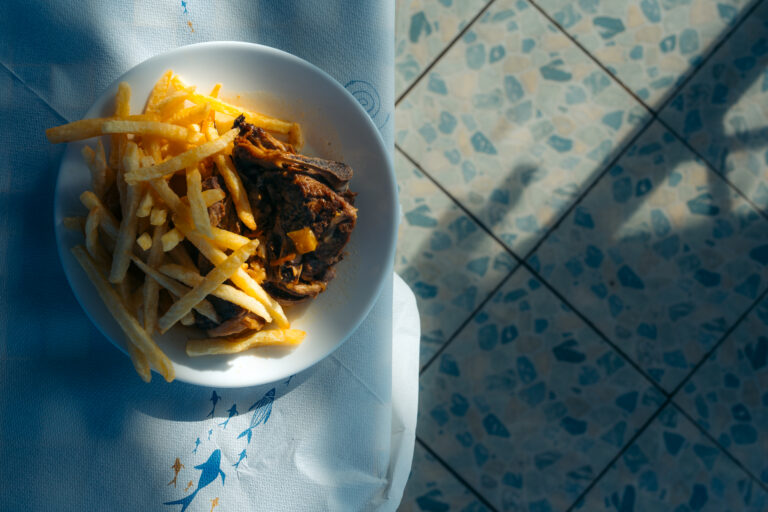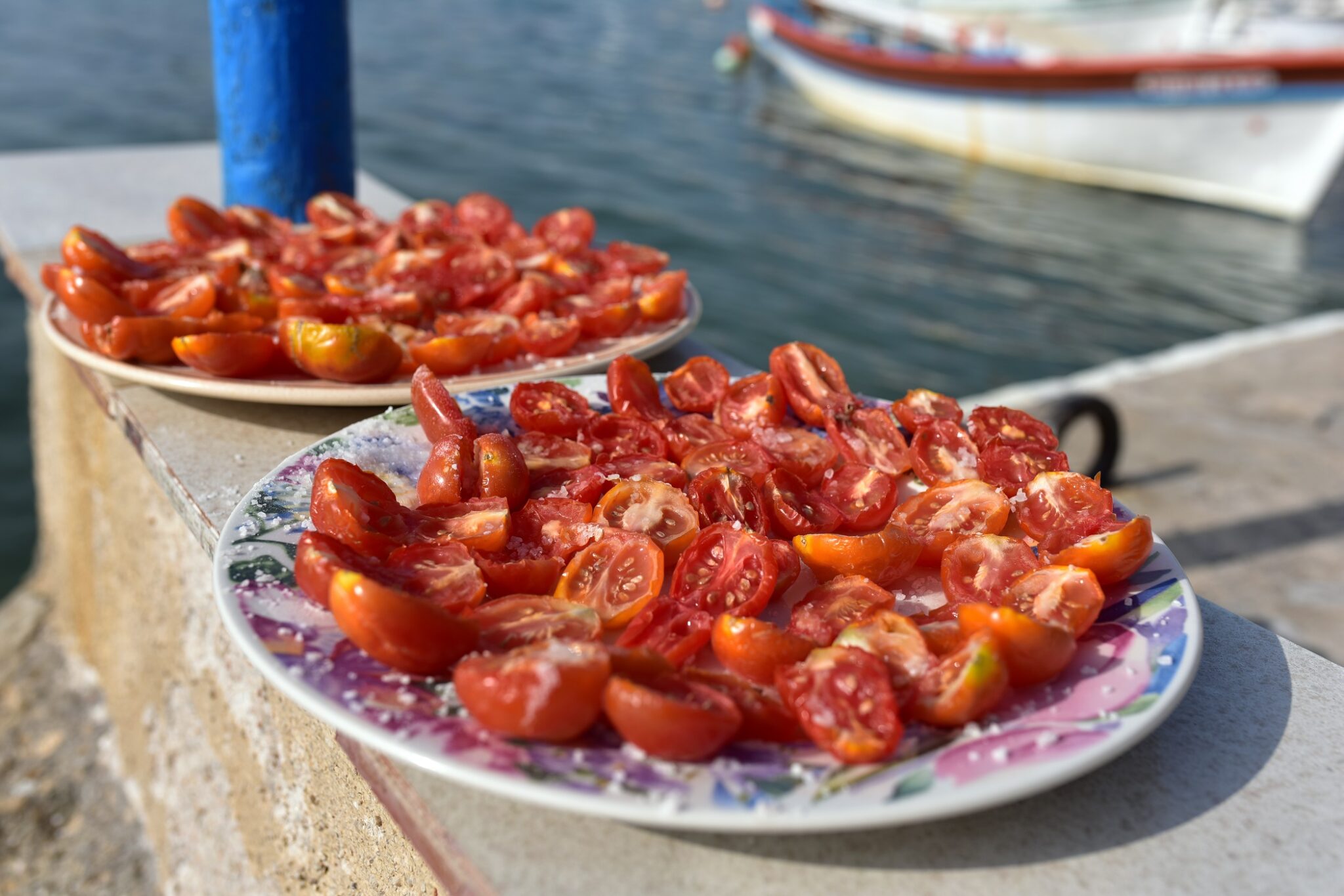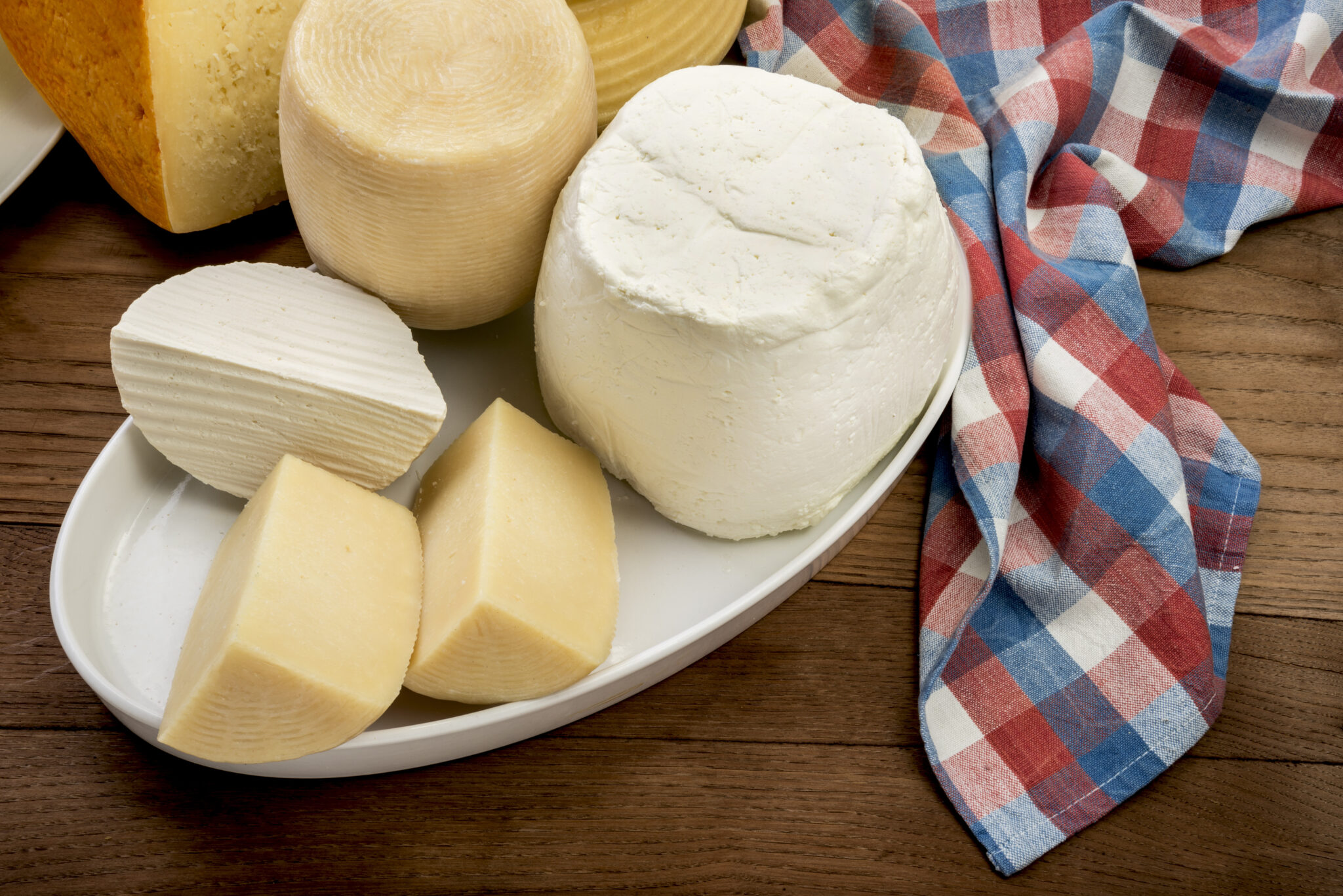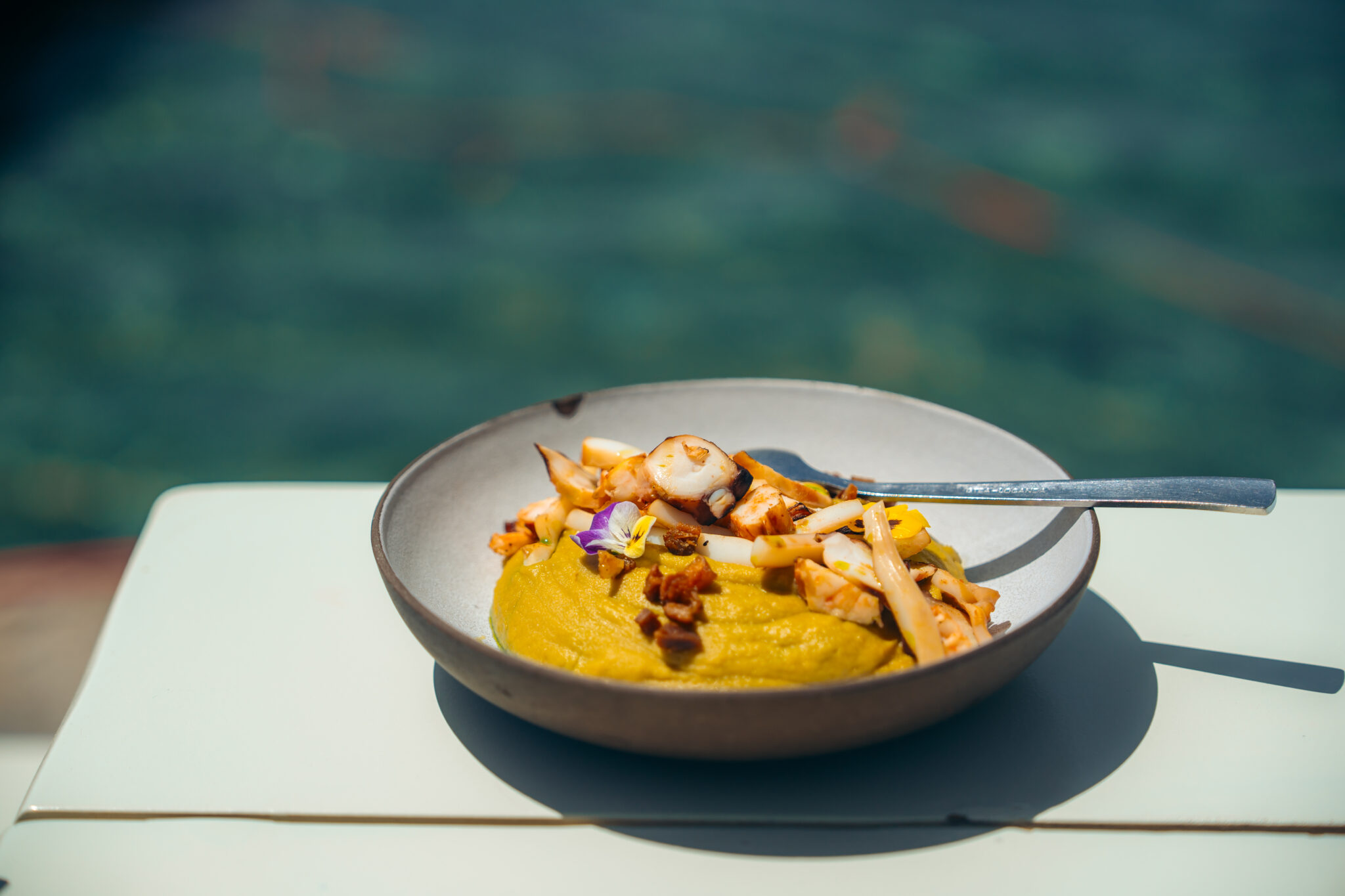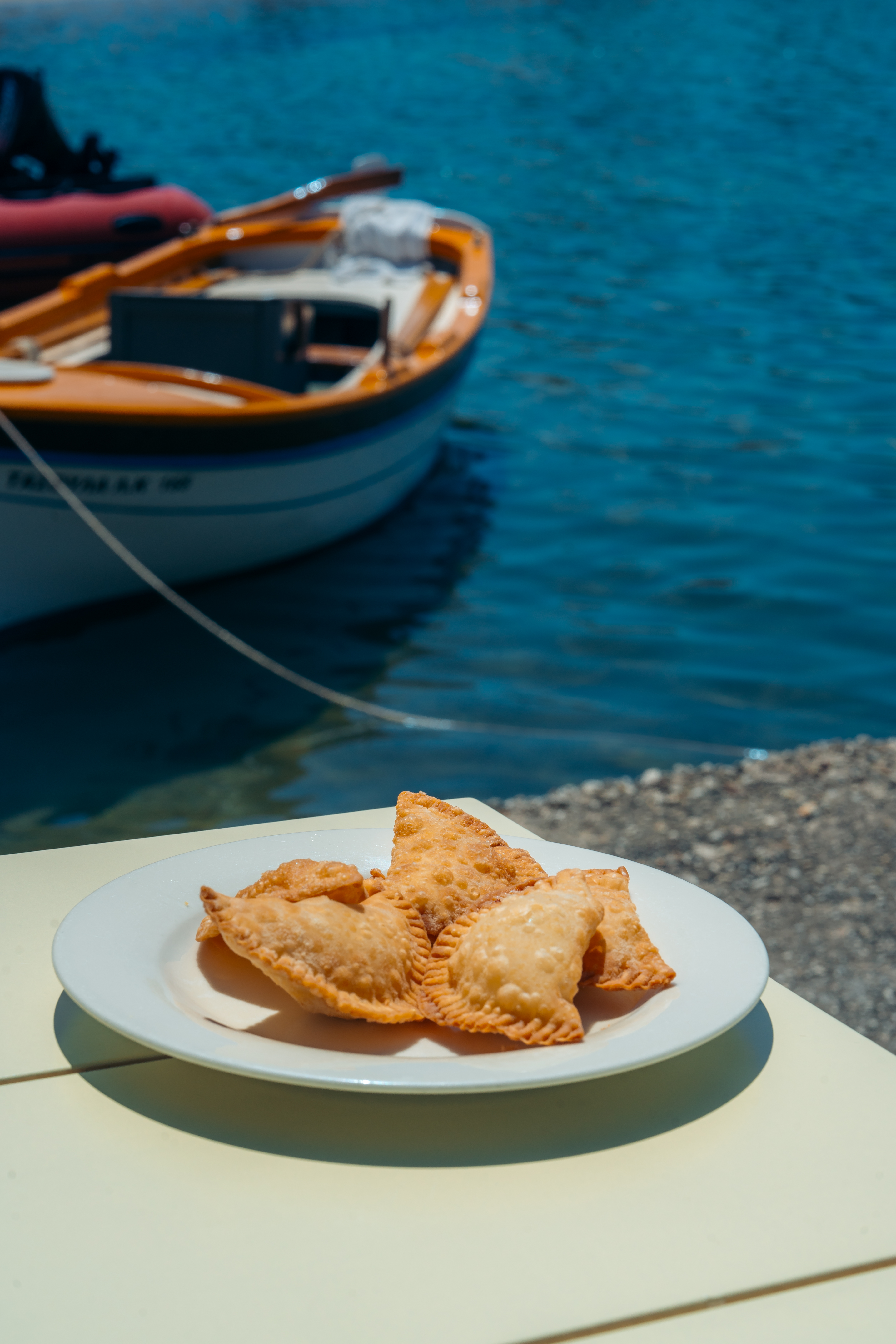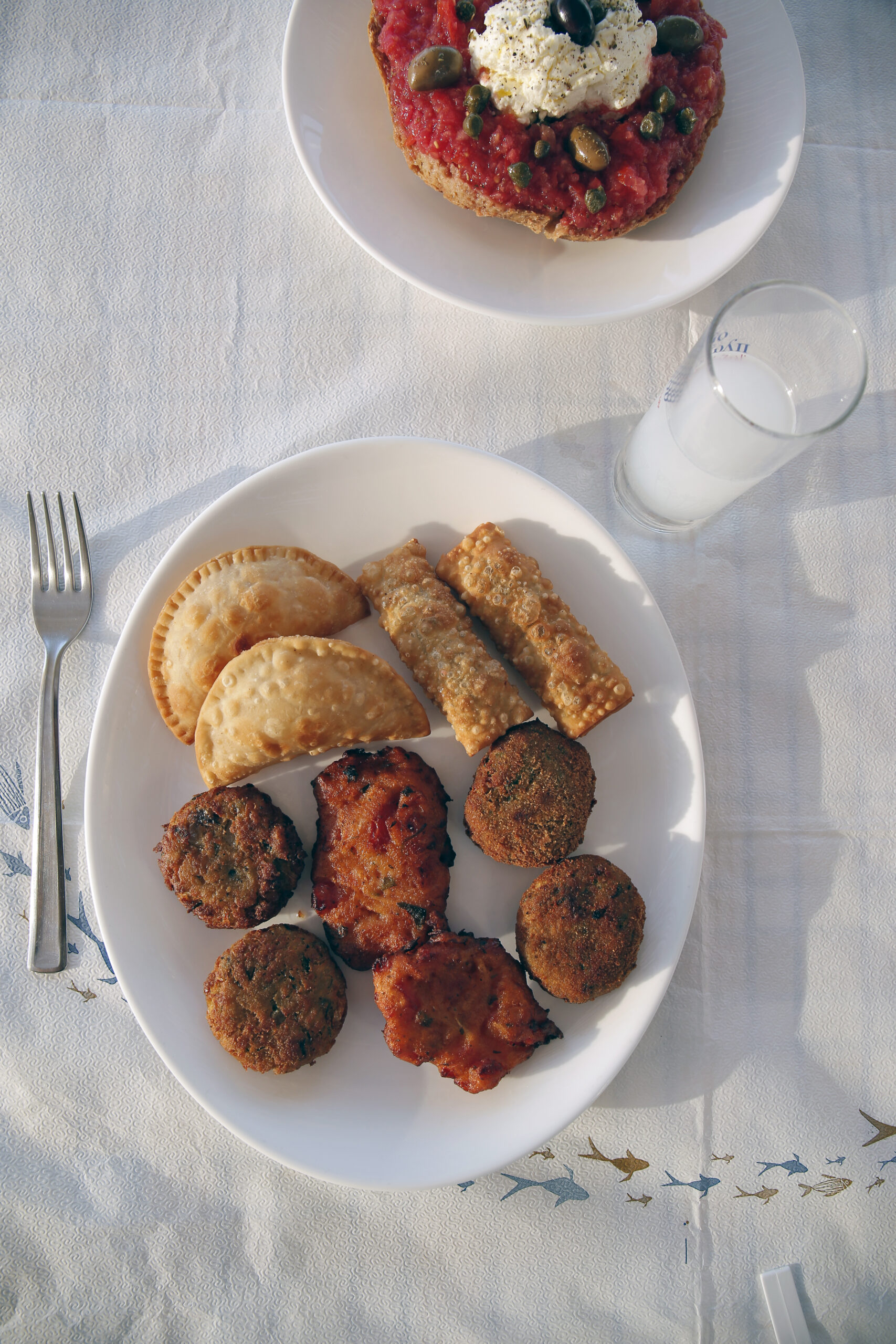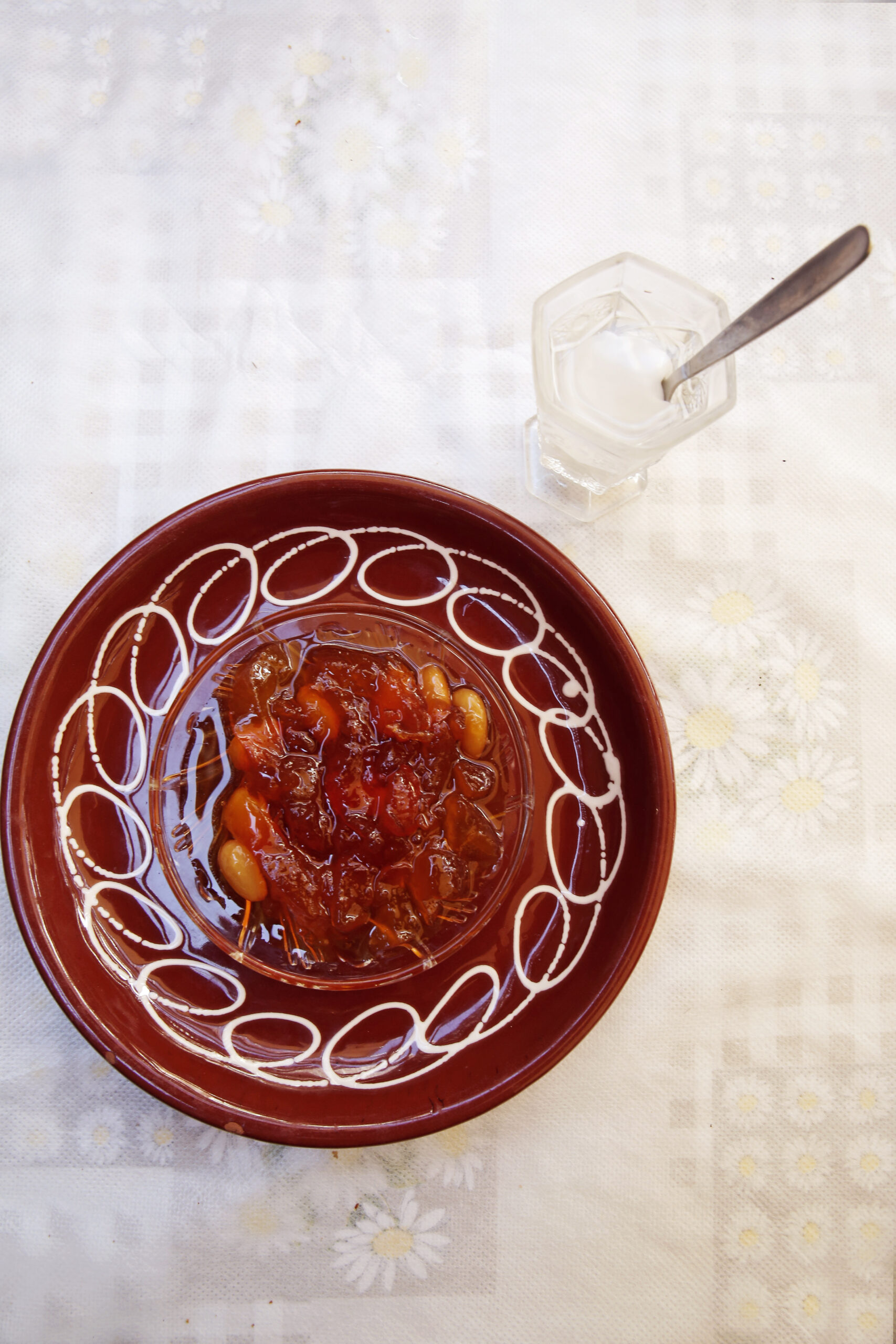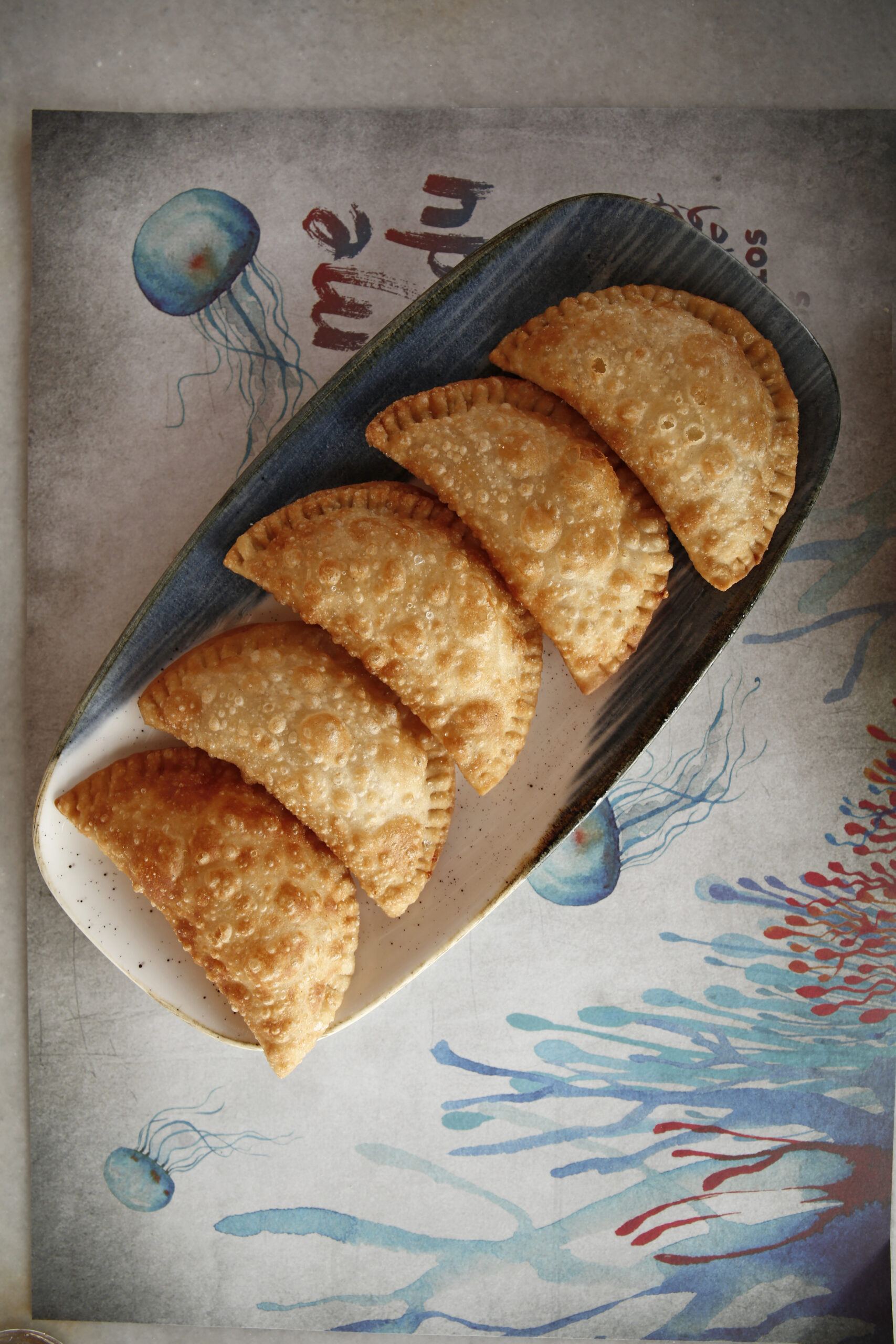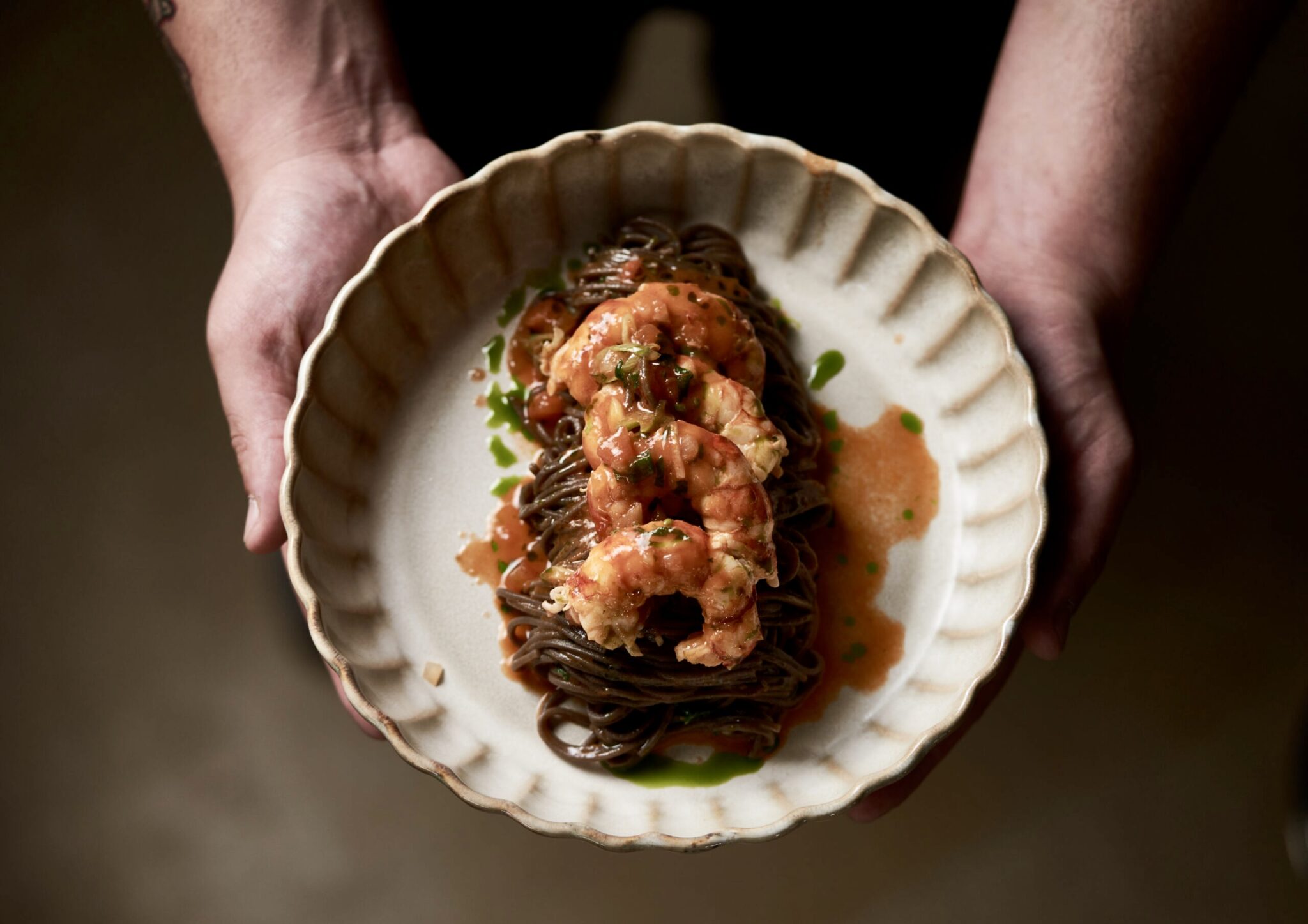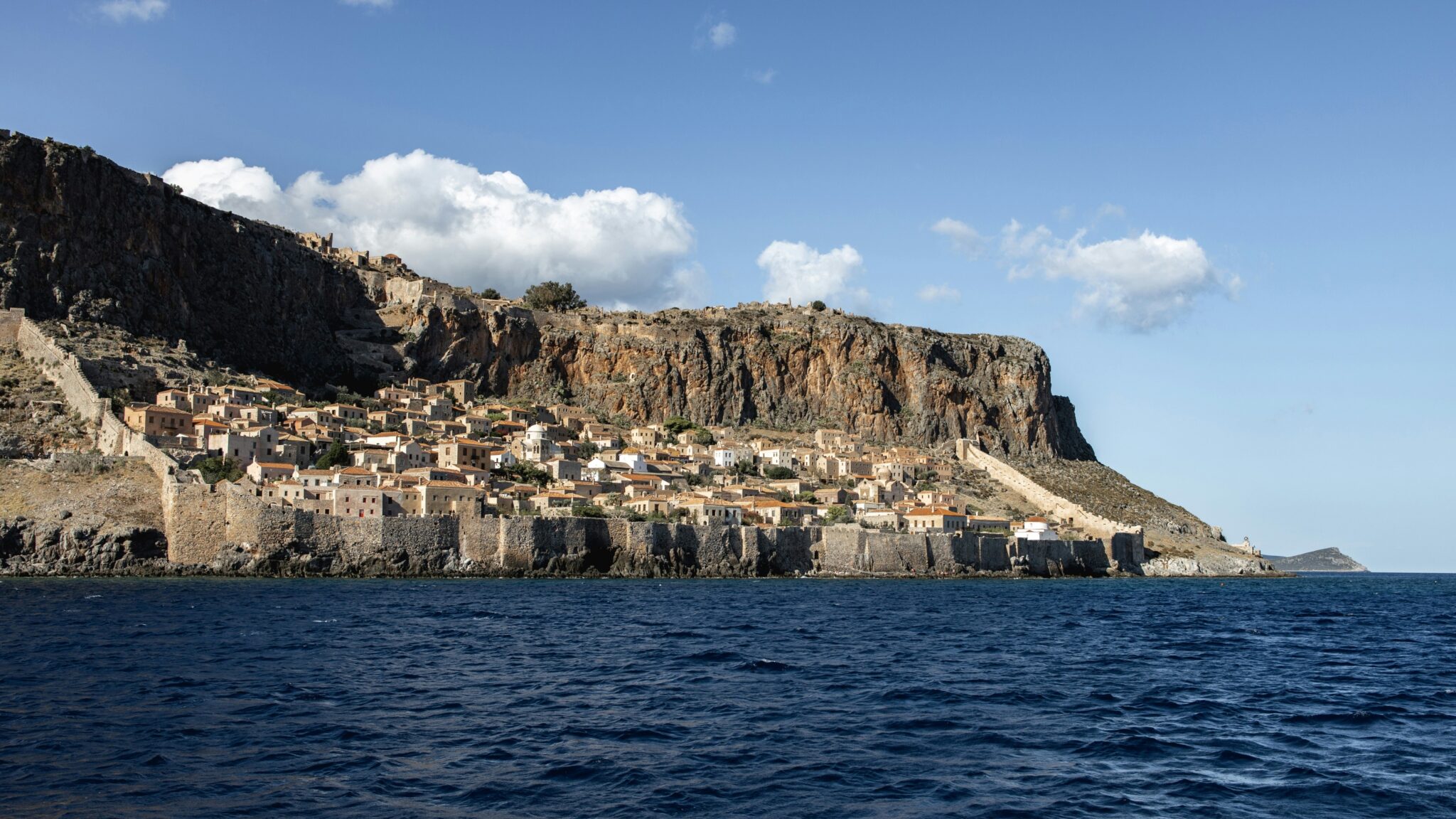Milos’ volcanic soil, combined with its historical journey and cultural influences, has shaped a cuisine rich in flavors and aromas, reflecting the cultures that have left their mark on the island. Throughout its long history, Milos transitioned from Roman to Byzantine rule, then the Venetian and then Ottoman occupations, although the latter never settled on the island. All these civilizations left a strong gastronomic imprint on the island’s local cuisine. For instance, handmade pasta, such as ‘matsi’ (a type of pasta usually boiled with milk and salt) and ‘lazania’, or ‘aliada’ (a garlic dip made with flour, known in Milos as “flour-based garlic dip”), and other local delicacies, are part of the unique culinary heritage left by the Venetians.
Another key factor in shaping the island’s gastronomy is the presence of Cretans. Their continuous revolts against Ottoman rule in the 19th century led to waves of refugees settling in Adamas. The sui generis Cretan cuisine left its mark on Milos’ local dishes. Fried pies stuffed with Milos cheese or ‘manoura’, ‘skaltsounia’ (pastries), ‘lychnarakia’, ‘manouropites’ (pies with manoura cheese), leavened buns, snails cooked in tomato sauce, fresh raw broad beans, barley rusks with tomato, and steamed artichoke leaves as appetizers – dishes that carry Crete in their DNA.
The Traditional Tomato Paste of Milos’ Culinary Heritage
One of the most characteristic traditional foods of Milos is its tomato paste (‘beltes’), with its rich flavor. It is made from the pulp of unsweetened tomatoes after the skins and seeds have been removed, then heavily salted and sun-dried. You’ll find the wonderfully pungent local tomato paste everywhere. It is served as an appetizer, accompanied by a little olive oil on fresh bread or rusks. It complements ‘aliada’ (a flour-based garlic dip) as a sauce on ‘skordolazana’ (a dish similar to tagliatelle). It is used as an ingredient in marinades for lamb or goat, which are then roasted in a traditional pot or oven, alongside potatoes. It can also be used in many other recipes, depending on the imagination of the island’s cooks. Once opened, the jar of tomato paste is covered with olive oil and kept in the fridge. Its flavor is so concentrated that a small amount is enough to add richness to an entire pot of food. Due to its high salt content, care must be taken when salting the dish.
Herbs and Aromatics
Milos is rich in aromatic herbs and spices that add intensity and fragrance to local recipes. Sage, rosemary, thyme, and oregano are used both fresh and dried. Arbaroriza, or lemon geranium leaves, also known as trisai, adds aroma to spoon sweets and liqueurs. Wild herbs, such as mastic shrubs and their berries, are used to flavor rusks, while wild greens, like alifonakia and koutsounades, are added to salads and pies, enhancing the dishes with scents directly from nature, born of soil, sun, and water.
The Cheeses of Milos
Milos’ pastoral cuisine is more prevalent than its seafood, with goat’s milk production playing a central role. The most recognizable cheese in the area is the dry cheese, also known as ladotyri (PDO), which is made from goat’s milk. Some cheesemakers maintain the traditional method of aging in caves, which imparts a unique flavor to the product.
Various types of cheese emerge from the production process. The freshest is manoura, ready for consumption after about 20 days. Depending on the aging period, manoura can evolve into other cheeses, with dry cheese requiring up to six months of maturation. Other traditional cheeses include xinomizithra, touloumotyri (also known as skotyri), and mizithra. Milos’ manoura, which can contain up to 100% goat’s milk, is distinguished by its production technique, similar to that of other islands in the Western Cyclades. It is consumed either fresh right after cheese-making or semi-fresh after 20 days. Manoura destined to become dry cheese undergoes a process called mourgoma, where it is smeared with oil sediment and aged in natural caves, producing a spicy and hard cheese with a robust flavor. Mizithra, once referred to as zymithra, is made from the whey of manoura, a method common to many parts of Greece. Afotyri, on the other hand, is the dry and salted version of mizithra.
The traditional Milos touloumotyri or skotyri, primarily produced in spring and summer, is made by mixing fresh manoura and mizithra. Finally, xinomizithra is a refreshing summer cheese, produced when milk starts to decline, making the cheese-making process of manoura less profitable. This cheese is slightly sour and is mostly made from full-fat goat’s milk, which curdles in about 24 hours with the help of rennet.
Local Dishes
Today, Milos’ cuisine harmoniously blends fresh fish and seafood with the island’s traditional pastoral flavors. Taking advantage of the abundance of seafood, dishes are prepared either grilled or fried. An old recipe that remains popular is ‘savoro’ fish: fried fish preserved in a sauce of vinegar, flour, and rosemary.
The local cuisine also includes a variety of “pseudo-meatballs,” such as tomato fritters, zucchini fritters, eggplant pies, and fennel pies. A unique delicacy is ‘pitarakia’, small chickpea pies flavored with herbs. Other local dishes include ‘ladenia’, a flatbread with onions, tomatoes, and olive oil, and ‘flaounakia’, small pies filled with wild greens and raisins.
Honey and Crops
The honey of Milos is of exceptional quality, with three main varieties: May honey or flower honey, thyme honey, and heather honey. Honey is used in traditional sweets such as ‘koufeto’ and watermelon pie and is sold in jars at local stores. Many residents of Milos engage in agriculture and livestock farming as a secondary occupation to supplement their income and meet family needs. Crops include legumes such as broad beans, lentils, and peas, as well as tomatoes, zucchini, and sesame. In the past, sowing was done in olive groves and terraced fields, with barley, wheat, and chickpeas cultivated in rotation. Of particular interest are Milos’ garlic varieties. The bournela tomato is especially known for producing the famous Milos tomato paste. Fruit cultivation mainly includes citrus fruits, while every family maintains quince trees, fig trees, and other fruit trees for the production of jams and spoon sweets. This traditional agriculture, although reduced, continues to hold significance, offering high-quality local products closely tied to the cultural heritage of Milos.
The Timeless Sweets of Milos
The most famous sweet of Milos is ‘koufeto’, a traditional spoon sweet made from white pumpkin, honey and almonds. It is an integral part of celebrations. Another popular treat is ‘rafioli’, a crescent-shaped sweet made from thin dough, filled with walnuts and honey, dusted with powdered sugar, and scented with rosewater.
Watermelon pie is another distinctive delicacy: a thin pie made from watermelon, flour, and honey, sprinkled with sesame seeds. Also notable are ‘achladakia’, raw almond-based confections made from almonds and honey. A variety of fried sweets, such as pancakes, sweet pies with cheese and honey, and ‘lychnarakia’ with mizithra cheese, complete the flavorful mosaic of local pastry-making.
Quince paste is made from the few quince trees found in each home, while fruits from family trees are used to make spoon sweets, such as grape, melon, jujube, and watermelon in grape syrup, a variation of ‘retseli’.
Sesame and honey have always been abundant in every home, making pasteli an integral part of the island’s sweet tradition. Milos’ sweets are rounded off with ‘xerotigana’ (fried dough strips) and ‘kourtalides’ or koutalides, the local version of doughnuts.



